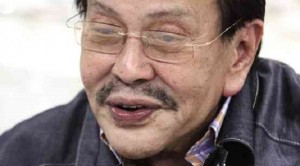In place of what Mayor Joseph Estrada called a “source of corruption” in Divisoria, a one-stop shop has been set up at a mall to make it “hassle-free” for street vendors to renew their permits and pay the right fees.
City Administrator Simeon Garcia, who was recently tasked to oversee the management of the market district, said a satellite office of the City Treasurer’s Office had been opened on the second floor of 168 Mall and would collect fees and issue business permits, cedula and police clearances.
The Manila Hawkers Office, which used to collect fees from the vendors, was abolished by Estrada for supposedly being a “source of corruption.”
“When I came in, there were 40 volunteer collectors. They are not employees of the City Hall; they have no salary. What’s their source of income? They extort money from the vendors, that’s why I fired them,” Estrada said in an interview.
Monthly fees
Forty employees under the treasurer’s office were trained to serve as collectors and all income-generating units were integrated under the City Treasurer’s Office headed by Liberty Toledo to ensure proper collection, Garcia said.
The street vendors should only pay for the business permit and the concession fee of P20 per square meter per day, which will now be collected on a monthly basis.
Estrada said he was not aware of the P110 fee being collected daily by the United Street Vendors of Divisoria Association Inc. that’s why he sacked Councilor Dennis Alcoreza as head of the Task Force Divisoria when he finally learned about it.
Policemen and station commanders tagged in extortion rackets were also sacked under Estrada’s one-strike policy against so-called“kotong” cops.
“We are willing to pay and follow the guidelines just to make a living,” Carmen Imperial, a street vendor since 1989, told the Inquirer yesterday. She said that under the previous administration, she used to cough up about P200 a day to police officers.
‘Goodwill money’
Garcia said vendors who used to crowd a stretch of Recto Avenue pay about P30,000 to P50,000 as “goodwill money” to City Hall employees.
“At least now the motorists are happy. Before they cannot pass through this road,” Estrada said, pointing to the live video feed reaching monitors inside his office from security cameras mounted in the Divisoria area.
“Next (to have this system) will be Quiapo and other areas but this (Divisoria) is my priority because it is the most chaotic,” he said.
Soon, a database will be established and identification cards will be issued to vendors to help City Hall determine the correct number of vendors and the expected collection.
Estrada said there are about 30,000 to 40,000 street vendors all over the city of Manila.
In September last year, the City Council has passed a resolution allowing the mayor to enter into a contract to computerize the hawkers’ collection.
